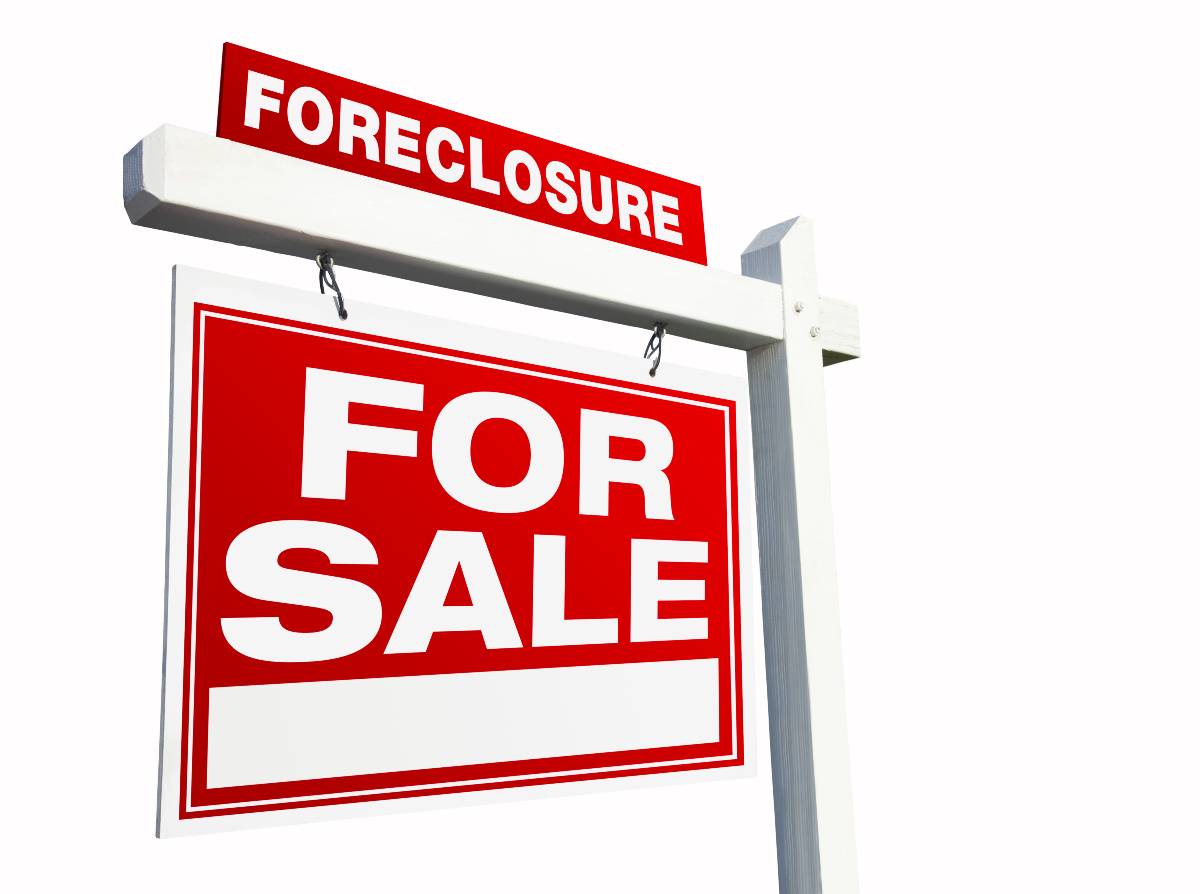We’re diving headfirst into the world of commercial foreclosures, and trust me, it’s a goldmine waiting to be tapped. Now, I know what you’re thinking – “Mike, isn’t that a bit risky?” Well, with great risk comes great reward, and I’m here to guide you through the ins and outs of this exciting investment opportunity.
In my 18 years of experience in the commercial real estate game, I’ve seen it all. From office buildings turned into tech hubs to warehouses transformed into trendy loft spaces. But let me tell you, there’s something special about commercial foreclosures. It’s like finding a diamond in the rough – with a little polish and the right strategy, you can turn a distressed property into a real estate gem.
Key Takeaways
- Commercial foreclosures offer unique investment opportunities in distressed real estate.
- Thorough due diligence and market analysis are crucial for successful investments.
- Leveraging technology and building industry relationships can give investors a competitive edge.
Understanding Commercial Foreclosures
Commercial foreclosures represent a unique segment of the real estate market, offering potential opportunities for investors who understand their complexities and inherent risks. These properties, which have undergone foreclosure proceedings due to the owner’s inability to meet mortgage obligations, can present value propositions for astute investors.
Types of Commercial Foreclosures
Judicial Foreclosures: This type of foreclosure involves legal proceedings overseen by the court system. The process typically includes:
- Filing of a lawsuit by the lender
- Court review and judgment
- Public auction of the property
These proceedings can be more time-consuming but offer additional legal protections for all parties involved.
Non-Judicial Foreclosures: This streamlined process occurs without court intervention, based on a power of sale clause in the mortgage or deed of trust. Key features include:
- Shorter timeline compared to judicial foreclosures
- Reduced legal costs
- Specific notice requirements and procedures that vary by state
Understanding the distinctions between these foreclosure types is crucial.
The Foreclosure Process
The commercial foreclosure process is a complex, multi-stage procedure that typically unfolds as follows:
- Default: The property owner fails to meet their mortgage obligations.
- Notice of Default: The lender formally notifies the borrower of their default status.
- Pre-foreclosure: A grace period allowing the owner to rectify the default.
- Auction: If unresolved, the property is offered for sale at a public auction.
- REO (Real Estate Owned): Should the auction fail to produce a buyer, the property reverts to the lender’s ownership.
Key Players
Several key entities play crucial roles in the commercial foreclosure landscape:
- Property Owner: The entity in financial distress.
- Lender: The financial institution seeking to recover its investment.
- Investors: Potential buyers seeking opportunities in distressed assets.
- Special Services: Specialists managing complex commercial loan situations.
Understanding the motivations and roles of these players is essential for successfully navigating commercial foreclosure investments. Successfully.
How to Find Commercial Foreclosure Opportunities
Finding the right deals requires a multi-channel approach and proactive outreach. Start by monitoring public foreclosure auction listings in your target markets—most counties publish these online or through third-party platforms like Auction.com and RealtyTrac. Set up automated alerts for new filings so you can evaluate properties early in the process.
Build direct relationships with special servicers and loss mitigation teams at regional and national banks. Many lenders prefer to sell distressed loans or REO properties off-market to avoid auction costs and negative publicity. Reach out regularly, demonstrate your financial capacity, and ask to be added to their buyer lists.
Leverage commercial real estate databases such as CoStar, LoopNet, and Crexi, filtering for “distressed” or “bank-owned” tags. Pair these tools with predictive analytics platforms that flag late-payment histories, occupancy drops, and other early warning signs of financial distress. The earlier you spot a potential foreclosure, the better your chance to negotiate favorable terms.
Market Analysis for Commercial Foreclosure Investments
Alright, folks, let’s put on our detective hats and dive into some serious market analysis. Trust me, in the world of commercial foreclosures, knowledge is power – and profit!
Current Trends in Commercial Real Estate
The commercial real estate market is like a rollercoaster – full of ups, downs, and unexpected turns. Currently, we’re seeing:
- A shift towards flexible workspaces in the office sector
- E-commerce driving demand for industrial properties
- Retail spaces getting creative with mixed-use concepts
But here’s the kicker – these trends can vary wildly depending on location. What’s hot in New York might be lukewarm in Nebraska.
Economic Indicators
Now, let’s talk about the crystal ball of real estate – economic indicators. These are the signposts that can help you predict where the market is heading:
- Interest rates: When they go up, borrowing gets expensive, and foreclosures might increase
- Employment rates: More jobs usually mean fewer foreclosures
- GDP growth: A healthy economy typically means fewer distressed properties
Keep an eye on these, and you’ll be ahead of the game in spotting potential foreclosure opportunities.
Identifying Promising Markets and Property Types
Here’s where it gets exciting. Not all foreclosures are created equal, and some markets are ripe with opportunity. Look for:
- Areas with economic growth but temporary setbacks
- Markets with diverse industries (less vulnerable to single-sector downturns)
- Regions with upcoming infrastructure improvements
As for property types, consider:
- Industrial properties: With e-commerce booming, warehouses are gold
- Multifamily properties: People always need a place to live
- Office spaces in up-and-coming tech hubs
Remember, the key is to spot the diamond in the rough before everyone else does. Happy hunting!
Due Diligence in Commercial Foreclosure Investments
Property Valuation Techniques
Valuing a distressed property is like trying to guess the weight of a dinosaur – it’s tricky, but not impossible. Here are some techniques to get you started:
- Comparative Market Analysis (CMA): Look at similar properties in the area
- Income Approach: Estimate the potential income the property could generate
- Cost Approach: Calculate the cost to rebuild the property from scratch
Pro tip: Don’t just rely on one method. Use a combination to get a more accurate picture.
Financial Analysis of Distressed Properties
This is where we put on our accountant hats (I know, not as cool as our detective hats, but bear with me). We need to dig into:
- Net Operating Income (NOI): What’s the property earning?
- Cap Rate: This tells you the potential return on your investment
- Debt Service Coverage Ratio (DSCR): Can the property’s income cover its debt?
With distressed properties, these numbers might look scary at first. But that’s where the opportunity lies!
Legal Considerations and Title Searches
Now, let’s talk legal stuff. I know, I know, it’s not the most exciting part, but it’s crucial. You need to:
- Conduct a thorough title search
- Check for any liens or encumbrances on the property
- Understand the foreclosure laws in your state
Trust me, you don’t want any surprises after you’ve invested your hard-earned cash.
Environmental Assessments
Last but not least, we need to make sure we’re not buying a toxic waste dump. An environmental assessment will check for:
- Hazardous materials
- Soil contamination
- Potential environmental liabilities
In commercial real estate, what’s under the ground can be just as important as what’s above it.
Financing Commercial Foreclosure Investments
Alright, let’s talk money, honey! Financing a commercial foreclosure can be a bit like trying to fit a square peg in a round hole – tricky, but not impossible. Let’s break it down.
Traditional Lending Options
First up, we’ve got your traditional lenders. These are your banks and credit unions. They’re like the vanilla ice cream of the financing world – reliable, but not always exciting. Here’s what you need to know:
- They typically offer lower interest rates
- You’ll need a solid credit score and financial history
- The approval process can be slower than molasses in January
Pro tip: Build relationships with local banks. They’re often more flexible than the big guys.
Alternative Financing Methods
Now, this is where things get interesting. When traditional lenders say “no,” these options might say “Let’s talk.”
- Hard Money Lenders
- Pros: Quick approval, less stringent requirements
- Cons: Higher interest rates, shorter loan terms
- Private Equity
- Pros: Flexible terms, potential for larger loans
- Cons: You might need to give up some control or ownership
Remember, with great reward comes… well, you know the rest. These options can be powerful tools but use them wisely.
Loan-to-Value Ratios and Debt Service Coverage
Now, let’s get into some nitty-gritty numbers. Lenders love these ratios, so you should too:
- Loan-to-Value (LTV) Ratio: This is how much the lender will give you compared to the property’s value. For commercial foreclosures, expect LTVs around 65-75%.
- Debt Service Coverage Ratio (DSCR): This shows if the property’s income can cover the loan payments. Most lenders want to see a DSCR of at least 1.25.
Here’s a quick example:
| Property Value | Loan Amount | LTV Ratio | NOI | Annual Debt Service | DSCR |
|---|---|---|---|---|---|
| $1,000,000 | $700,000 | 70% | $100,000 | $70,000 | 1.43 |
In this case, the LTV and DSCR look good. You’d likely get a thumbs-up from lenders.
Remember, financing is like a puzzle. You’ve got to find the right pieces that fit your specific situation. Don’t be afraid to get creative – sometimes the best deals come from thinking outside the box!

Investment Strategies for Commercial Foreclosures
Alright, investors, it’s time to put on your strategy hats. When it comes to commercial foreclosures, there’s more than one way to skin a cat (not that we’re in the cat-skinning business, mind you).
Value-Add Opportunities
This strategy is all about seeing potential where others see problems. It’s like being a real estate Michelangelo, chipping away at a block of marble until you reveal the masterpiece within.
Here’s what to look for:
- Outdated buildings in great locations
- Properties with manageable structural issues
- Spaces that can be reconfigured for better use
The key is to ensure that your improvements will significantly increase the property’s value. Don’t go installing gold-plated faucets if it won’t boost your ROI!
Repositioning Strategies
Sometimes, a property just needs a new identity. This strategy is like giving a building a career change. For example:
- Turning an old warehouse into trendy loft apartments
- Transforming a struggling mall into a mixed-use development
- Converting an outdated office building into a co-working space
The trick here is to understand market demands and trends. What does the area need? What’s the next big thing?
Hold-and-Rent Approach
This strategy is for the patient investor. It’s like planting a tree – you nurture it, watch it grow, and eventually enjoy the fruits of your labor.
Benefits of hold-and-rent:
- Steady cash flow from rental income
- Potential for long-term appreciation
- Tax benefits from depreciation
But remember, being a landlord isn’t all fun and games. You’ll need to factor in property management costs and potential vacancies.
Fix-and-Flip Tactics
For those who like quick results, the fix-and-flip strategy might be your cup of tea. It’s like being on one of those home renovation shows but with commercial properties.
Steps to a successful flip:
- Buy low (that’s where foreclosures come in handy)
- Renovate smartly (focus on improvements with the highest ROI)
- Sell high (timing is everything!)
Just remember, flipping commercial properties isn’t as simple as slapping on a fresh coat of paint. You’ll need to understand local market demands, zoning laws, and commercial building codes.
No matter which strategy you choose, the key is to have a clear plan before you buy. And always, always be prepared for the unexpected. In commercial real estate, flexibility can be your best friend!
Risk Management in Commercial Foreclosure Investing
Investing in commercial foreclosures can be like walking a tightrope. Exciting? Absolutely. But you want a safety net.
Common Pitfalls and How to Avoid Them
Let’s face it, we’ve all stubbed our toes a time or two. In commercial foreclosures, the stakes are a bit higher than a sore toe. Here are some common pitfalls and how to sidestep them:
- Overestimating property value: Always get multiple professional appraisals.
- Underestimating renovation costs: Add a 20% buffer to your renovation budget. Trust me on this one.
- Ignoring location factors: That bargain-priced office building might be cheap for a reason. Do your homework on the area.
- Overlooking legal issues: Title problems can be a real headache. Always, always do a thorough title search.
Diversification Strategies
Ever heard the saying “Don’t put all your eggs in one basket”? Well, in commercial real estate, it’s more like “Don’t put all your buildings on one block.”
Here are some ways to diversify:
- Property Type: Mix it up with office, retail, industrial, and multifamily properties.
- Location: Spread your investments across different cities or even states.
- Investment Strategy: Combine fix-and-flip with some hold-and-rent properties.
Diversification won’t eliminate all risks, but it can help you weather market fluctuations better.
Exit Strategies and Contingency Planning
In the immortal words of The Clash, “Should I stay or should I go?” Having a clear exit strategy (or two) is crucial in commercial foreclosure investing.
Some exit strategies to consider:
- Sell after renovation
- Refinance and hold for rental income
- 1031 exchange into a different property
But what if things don’t go according to plan? That’s where contingency planning comes in. Always have a Plan B (and maybe a Plan C and D). This might include:
- A line of credit for unexpected expenses
- Partnerships with other investors for additional capital
- Alternative uses for the property if the original plan falls through
In commercial real estate, the only constant is change. The more prepared you are for different scenarios, the better you’ll sleep at night (and trust me, a good night’s sleep is priceless in this business).
Technology and Data Analytics in Commercial Foreclosure Investing
Alright, tech enthusiasts, it’s time to geek out a little. In today’s world, data is king, and technology is the castle it lives in. Let’s explore how you can leverage these tools to become a commercial foreclosure investing ninja.
Using Big Data for Market Analysis
Remember when we used to rely on gut feelings and local newspapers for market insights? Well, those days are as outdated as floppy disks. Welcome to the era of big data!
Here’s how you can use big data:
- Predictive Analytics: Use historical data to forecast market trends
- Demographic Analysis: Understand population shifts and their impact on commercial real estate
- Economic Indicators: Track job growth, GDP, and other factors affecting property values
Pro tip: Platforms like CoStar and Reonomy offer powerful data analytics tools specifically for commercial real estate. They’re not cheap, but the insights can be worth their weight in gold.
Property Management Software for Distressed Assets
Managing a distressed property can be like herding cats. Luckily, there’s an app for that (or several, actually).
Key features to look for in property management software:
- Tenant tracking and communication
- Maintenance request management
- Financial reporting and analysis
- Lease management
Some popular options include Buildium, AppFolio, and Yardi. These tools can help you turn a chaotic distressed property into a well-oiled machine.
Predictive Analytics for Identifying Potential Foreclosures
Now, this is where it gets really exciting. Imagine if you could predict which properties might go into foreclosure before it happens. Well, with predictive analytics, you can get pretty close.
Factors that predictive models might consider:
- Late payment history
- Occupancy rates
- Local market conditions
- Property owner’s financial health
Companies like Auction.com and RealtyTrac use these models to identify potential foreclosures. It’s like having a crystal ball but with algorithms instead of mystical powers.
Remember, though, technology is a tool, not a magic wand. It can provide valuable insights, but it’s your experience and judgment that will ultimately guide your investment decisions.
So, embrace the tech, but don’t forget to trust your instincts too. After all, real estate is as much an art as it is a science!
Distressed Debt Investing as a Related Strategy
Alright, risk-takers and opportunity seekers, let’s venture into the wild world of distressed debt investing. It’s like the cool cousin of direct property acquisition – a bit more complex, but potentially very rewarding.
Understanding Distressed Debt in Commercial Real Estate
Distressed debt in commercial real estate is like finding a designer handbag at a thrift store price. It’s debt that’s in trouble, often selling for less than its face value because the borrower is having financial difficulties.
Here’s the lowdown:
- Non-performing loans: These are loans where the borrower has stopped making payments.
- Sub-performing loans: The borrower is making payments, but not the full amount or not on time.
- REO (Real Estate Owned): Properties that have been foreclosed on and are now owned by the lender.
Investing in distressed debt can be a way to gain control of a property without going through the traditional buying process. It’s like getting the VIP pass to property ownership!
Strategies for Investing in Distressed Debt
Now, let’s talk strategy. There are a few ways to play this game:
- Loan-to-Own: Buy the debt to foreclose and take ownership of the property. It’s like playing chess – you’re thinking several moves ahead.
- Discounted Payoff: Negotiate with the borrower to settle the debt for less than what’s owed. Everyone wins – you make a profit, and the borrower gets out of debt.
- Restructuring: Work with the borrower to modify the loan terms. This can involve extending the loan term, reducing the interest rate, or even forgiving some of the principal.
Remember, these strategies require patience and negotiation skills. It’s not for the faint of heart!
Pros and Cons Compared to Direct Property Acquisition
Like everything in life, distressed debt investing has its ups and downs. Let’s break it down:
Pros:
- Potential for higher returns
- Less competition than traditional property acquisitions
- Opportunity to gain control of properties at a discount
Cons:
- More complex than direct property acquisition
- Requires specialized knowledge of debt markets
- Can be time-consuming and unpredictable
Here’s a quick comparison:
| Factor | Distressed Debt | Direct Property Acquisition |
|---|---|---|
| Initial Cost | Often lower | Usually higher |
| Complexity | High | Moderate |
| Control | Indirect at first | Immediate |
| Potential Returns | Higher | Varies |
| Time to Realize Returns | Can be longer | Often quicker |
Distressed debt investing isn’t for everyone. It’s like the spicy dish on the menu – some people love the extra kick, while others prefer to stick with the classics. Know your risk tolerance and invest accordingly!
Networking and Relationship Building in Commercial Foreclosures
Alright, social butterflies, it’s time to talk about one of the most crucial aspects of commercial real estate investing – networking. In this business, who you know can be just as important as what you know.
Importance of Industry Connections
Think of the commercial real estate world as a giant spider web. Every connection you make can lead to countless opportunities. Here’s why networking is so crucial:
- Inside Information: Often, the best deals never hit the public market. They’re snapped up through personal connections.
- Expertise Access: You can’t be an expert in everything, but you can know experts in everything.
- Credibility Boost: Strong industry connections can make you more attractive to lenders and partners.
In commercial foreclosures, timing is everything. The right connection could tip you off to an opportunity before anyone else knows about it!
Building Relationships with Banks and Special Servicers
Banks and special servicers are like the gatekeepers of commercial foreclosures. Building relationships with them can give you a significant edge. Here’s how:
- Attend Industry Events: Banks often send representatives to real estate conferences and seminars.
- Offer Value: Don’t just ask for deals. Offer insights or connections that could benefit them too.
- Be Reliable: If you say you’ll close a deal, make sure you do. Reliability goes a long way in this business.
Pro tip: Many special servicers specialize in certain types of properties or geographic areas. Do your research and target the ones that align with your investment strategy.
Joining Real Estate Investment Associations
Real estate investment associations are like the watering holes of the property world. They’re where investors, lenders, and service providers all come to mingle. Benefits include:
- Educational Opportunities: Many associations offer workshops and seminars.
- Networking Events: Meet potential partners, lenders, or even friendly competitors.
- Deal Flow: Members often share investment opportunities.
Some popular associations include the National Real Estate Investors Association (National REIA) and the Commercial Real Estate Development Association (NAIOP).
Networking isn’t about collecting business cards or LinkedIn connections. It’s about building genuine relationships. Be authentic, be helpful, and be patient. The connections you make today could lead to your biggest deal tomorrow!
Tax Implications and Benefits of Commercial Foreclosure Investing
Alright, let’s talk about everyone’s favorite topic – taxes! Just kidding, I know it’s not the most exciting subject, but understanding the tax implications of commercial foreclosure investing can save you a bundle and even boost your returns. So, let’s dive in!
Potential Tax Deductions and Credits
Investing in commercial foreclosures can come with some sweet tax perks. Here are a few to keep on your radar:
- Depreciation: This is the big one. You can deduct the cost of the building (not the land) over time, typically 39 years for commercial properties.
- Interest Expenses: If you’ve financed your purchase, you can usually deduct the interest payments.
- Property Taxes: These are generally deductible as a business expense.
- Renovation Costs: Improvements to the property can often be deducted, either immediately or over time.
- Travel Expenses: If you’re traveling to check on your property or meet with tenants, those costs may be deductible.
Tax laws can be as complex as a Rubik’s cube, so always consult with a tax professional for personalized advice.
1031 Exchanges in Foreclosure Investments
Now, let’s talk about the holy grail of real estate tax strategies – the 1031 exchange. This is like the teleportation device of the investment world. It allows you to defer capital gains taxes by rolling the proceeds from one investment property into another.
Here’s how it works in a nutshell:
- Sell your commercial foreclosure property
- Identify a replacement property within 45 days
- Close on the new property within 180 days
The beauty of this is that you can keep deferring taxes as you trade up to bigger and better properties. It’s like playing real-life Monopoly!
Working with Tax Professionals for Optimal Strategies
Now, I know what you’re thinking – “Mike, this tax stuff is making my head spin!” Don’t worry, you’re not alone. That’s why working with a qualified tax professional is crucial.
A good tax pro can help you:
- Identify all possible deductions and credits
- Structure your investments for optimal tax efficiency
- Plan for future tax liabilities
The cheapest tax professional isn’t always the best. Look for someone with experience in commercial real estate investing. It might cost a bit more upfront, but the savings and peace of mind can be well worth it.
Legal and Regulatory Considerations
Let’s put on our legal eagle hats for a moment. I know, I know, legal stuff isn’t the most thrilling part of real estate investing, but trust me, understanding these aspects can save you from some major headaches down the road.
Foreclosure Laws and Regulations
Foreclosure laws are like local cuisines – they can vary significantly from state to state. Here’s what you need to know:
- Judicial vs. Non-Judicial States: Some states require foreclosures to go through the court system (judicial), while others don’t (non-judicial). This can significantly affect the timeline and process of acquiring foreclosed properties.
- Redemption Periods: In some states, property owners have a “right of redemption” period after foreclosure, during which they can reclaim their property by paying off the debt. This can last anywhere from a few months to a year or more.
- Notice Requirements: Each state has different rules about how and when property owners must be notified of foreclosure proceedings.
Always consult with a local real estate attorney when investing in a new state. They can guide you through the specific laws and regulations in that area.
Bankruptcy Proceedings and Their Impact
Bankruptcy can throw a wrench in the works of a foreclosure investment. Here’s how it might affect you:
- Automatic Stay: When a property owner files for bankruptcy, it triggers an automatic stay on foreclosure proceedings. This can delay your ability to acquire the property.
- Chapter 7 vs. Chapter 11: Different types of bankruptcy can have different impacts on the foreclosure process. Chapter 7 typically leads to liquidation, while Chapter 11 involves restructuring of debts.
- Creditor Hierarchy: In bankruptcy proceedings, secured creditors (like mortgage holders) typically have priority over unsecured creditors.
Navigating bankruptcy proceedings can be complex. It’s often worth bringing in legal expertise to help you through this process.

Tenant Rights and Lease Considerations
When you’re dealing with commercial foreclosures, you’re not just dealing with property – you’re dealing with businesses and livelihoods. Here’s what to keep in mind:
- Lease Survivability: In most cases, existing leases survive foreclosure. This means you’ll inherit the tenants along with the property.
- Eviction Restrictions: There are often restrictions on evicting tenants immediately after foreclosure. Make sure you understand these before making any moves.
- Security Deposits: Be clear on who’s responsible for tenant security deposits – the previous owner or you as the new owner.
- Lease Amendments: Review any recent lease amendments carefully. Sometimes, distressed owners make unfavorable concessions to tenants before foreclosure.
Here’s a quick checklist for tenant considerations:
- Review all existing leases
- Understand your obligations as the new landlord
- Communicate clearly with existing tenants
- Consider hiring a property manager experienced in distressed properties
Happy tenants can be your best asset in turning around a distressed property. Treat them fairly, and they might just help you succeed in your new investment.
Legal and regulatory considerations might not be the most exciting part of commercial foreclosure investing, but they’re crucial to your success. Do your homework, and consult with experts, and you’ll be well on your way to navigating these waters like a pro!
Future Outlook for Commercial Foreclosure Investments
Looking ahead, the commercial foreclosure market continues to offer exciting opportunities for savvy investors. Here are a few trends to watch:
- Technology Integration: The use of AI and big data in identifying and analyzing foreclosure opportunities is likely to become more prevalent.
- Sustainability Focus: Properties with green features or potential for sustainable upgrades may become increasingly attractive to both investors and tenants.
- Adaptive Reuse: As the needs of businesses and communities evolve, we may see more opportunities to repurpose foreclosed properties for new uses.
FAQs
How is investing in commercial foreclosures different from residential foreclosures?
Commercial foreclosures often involve larger properties, higher price points, and more complex legal and financial considerations. They can offer potentially higher returns but also come with increased risks and complexity. Unlike residential foreclosures, commercial properties are valued based on their income potential rather than comparable sales.
What’s the typical timeline for a commercial foreclosure investment?
The timeline can vary widely depending on the state, the type of foreclosure (judicial or non-judicial), and whether bankruptcy is involved. Generally, from the start of foreclosure proceedings to the sale of the property, it can take anywhere from a few months to over a year. After acquisition, the turnaround time for your investment will depend on your chosen strategy – a fix-and-flip might take 6-18 months, while a hold-and-rent strategy could span several years.
How much capital do I need to start investing in commercial foreclosures?
The capital required can vary significantly based on the property type, location, and investment strategy. While some smaller commercial properties might be available for a few hundred thousand dollars, many require millions. Don’t forget to factor in additional costs for due diligence, renovations, and carrying costs. If you’re just starting, consider partnering with other investors or exploring crowdfunding platforms to get your foot in the door with less capital.
What are the biggest risks in commercial foreclosure investing?
Some of the major risks include:
- Overestimating the property’s value or underestimating renovation costs
- Unexpected legal issues or title problems
- Changes in market conditions or local regulations
- Difficulties in securing financing or refinancing
- Challenges in finding or retaining tenants
Mitigate these risks through thorough due diligence, careful financial planning, and having contingency plans in place.
Can I invest in commercial foreclosures through REITs?
Yes, some Real Estate Investment Trusts (REITs) specialize in or include distressed commercial properties in their portfolios. This can be a way to gain exposure to commercial foreclosure investments without directly purchasing and managing properties yourself. However, remember that investing through REITs means you have less control over specific investment decisions and may have lower potential returns compared to direct investing.
Conclusion
Ready to dive into the world of commercial foreclosure investing? We’ve covered a lot of ground, from market analysis to investment strategies and risk management. Now it’s time to put that knowledge into action. Remember, in this field, timing is everything and the right opportunity could be just around the corner.
Don’t let another great deal slip away. Take the next step in your investment journey today. Schedule a consultation with me, and let’s leverage my 18 years of experience to craft a personalized strategy for your success in commercial foreclosures.
Click here to book your consultation now. Your next big investment is waiting!




